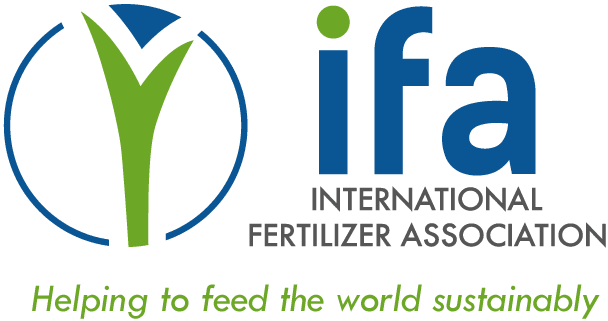Biostimulants
key priorities
What are plant biostimulants?
Plant biostimulants are products that contain substances and/or
micro-organisms whose function when applied to plants or the
rhizosphere is to stimulate natural processes independently of
the product’s nutrient content to enhance/benefit nutrient uptake,
nutrient efficiency, tolerance to abiotic stress, yield, and crop
quality.
Plant biostimulants are an important tool for sustainable agriculture due to their ability to enhance tolerance to abiotic stress, nutrient use efficiency, crop performance, and quality.
They are complementary to mineral fertilizers by improving availability, assimilation, translocation, and use of certain plant nutrients. Biostimulants operate through different mechanisms than fertilizers, regardless of the presence of nutrients in the products and differ from crop protection products because they act on the plant’s metabolism, or enrich the soil microbiome, and do not have any direct actions against pests or diseases. Plant biostimulation is thus part of the 4R nutrient stewardship toolbox available to farmers.
A growing number of regulatory frameworks around the globe recognize plant biostimulants as a distinct product category related to the broad concept of crop physiology, plant nutrition, and soil fertility. The European Regulation (EU) 2019/1009 is considered to be a milestone as the first major piece of legislation providing a comprehensive framework for placing plant biostimulants on the market.

How do plant biostimulants work?
Some very important factors differentiate plant biostimulants from traditional fertilizers and other inputs. Plant biostimulants are often derived from biological materials and include seaweed and other algae, higher plants, microbial preparations, animal raw materials, humates, composts, wastes, and by-products.
They are in most cases complex mixtures of numerous substances, and their effect on crops is mainly due to this complexity and synergistic interactions rather than of the action of one individual compound.
They can influence the physiological functions of various plant organs, including roots, stems, leaves, flowers, and fruits, but their specific mode of action is often not well understood scientifically. In recent years, agronomic research in this domain has increased dramatically to better understand such questions.
Plant biostimulants can enhance physiological plant functions such as increased uptake and transport of nutrients, and improved root growth. They can foster plant growth and development throughout the crop life cycle from seed germination to plant maturity in several ways:
- Improving the efficiency of the plant’s metabolism to induce yield increases and enhanced crop quality;
- Increasing plant tolerance to and recovery from abiotic stress; such as extreme temperatures, hydric stress, salinity, etc.;
- Facilitating nutrient assimilation, translocation, and use;
- Enhancing quality attributes of produce, including sugar content, color, fruit seeding, etc.; and
- Improving water use efficiency.
These products can also have a beneficial influence on the direct environment surrounding the plants, for example, by improving a plant’s rhizosphere, which can provide a better environment for symbiotic relationships with beneficial microorganisms in the soil or enriching the soil microbiome through the addition of microbial biostimulants.
Examples of plant biostimulant components
Frequently, plant biostimulants are complex formulations of several substances and/or microorganisms. Like in many biological systems, plant biostimulants, the plants they are applied to, the plant’s microbiome (including soil biodiversity), physical and chemical soil properties, climatic conditions, etc. induce emergent effects that are believed to be more than the sum of the parts. This may be, in part, because the presence of more than one component may be required to trigger a mode of action. Below, we describe some of the effects of common biostimulant components.
Humic substances, which include humic and fulvic acids, are among the most common organic substances, making up much of the organic matter in the world’s soils. Humic and fulvic acids are complex organic molecules of diverse structure and composition that form in the soil as byproducts of the decomposition and microbial metabolism of plant and animal residues. While the materials can vary quite dramatically in molecular structure and weight, humic substances in soil organic matter have been recognized and used for decades to improve soil structure and functions. They can be applied in various ways, including direct application to the soil, foliar application, incorporation into fertilizer and other products, and through irrigation water.
Plants and seaweed extracts contain useful substances with biostimulant effects. Each extract is unique, due to the origin of the vegetal material and the process of extraction. In the case of seaweeds, species, location, the temperature of the water, time of year and other factors also influence the exact composition of the extract. This means that many varied biostimulant effects may be provided by a range of different plant and seaweed extracts through multiple different mechanisms.
Some compounds from seaweed and plant extracts have been shown to stimulate root and shoot growth as well as flowering and fruit development. Seaweed and plantextracts can positively influence cell and tissue development, providing increased access to and utilization of available plant nutrients. This effectively allows crops to mitigate abiotic stress and other environmental factors.
By replacing substances that plants might manufacture themselves in times of stress, plant and seaweed extracts can help plants conserve energy that can be put to better use for growth. The diversity of extracts means that they may contribute in many different ways to enhance plant growth, tolerance to abiotic stress, improve yield quality and quantity, foster beneficial soil microorganisms, and improve the provisioning, uptake, translocation and utilization of plant nutrients.
Peptides and amino acids are important molecules in plant mechanisms because they are the basis of proteins. Some bioactive peptides are able to modulate important physiological functions of plants because they bind to the cell receptors that regulate specific metabolic processes. In addition to peptides and amino acids derived from plant extracts, some are also obtained from animal by-products and microorganisms.
Microbial biostimulant products (fungi and bacteria) can include “pure strain” fermentation solutions, based on individual isolates; consortia of admixed or co-fermented isolates; or much more complex “natural” communities derived from organic matter processing. Microbial products have been shown to enhance plant growth through various direct and indirect mechanisms; and to help with nutrient availability and uptake, improving soil condition, helping plants tolerate abiotic stress, and enhancing overall crop quality attributes. In the plant nutrient space, the most common biological products include nitrogen-fixing bacteria, phosphorussolubilizing bacteria and mycorrhizal fungi.
Inorganic compounds that include some chemical elements that promote plant growth and may be essential to particular taxa but are not required by all plants.
